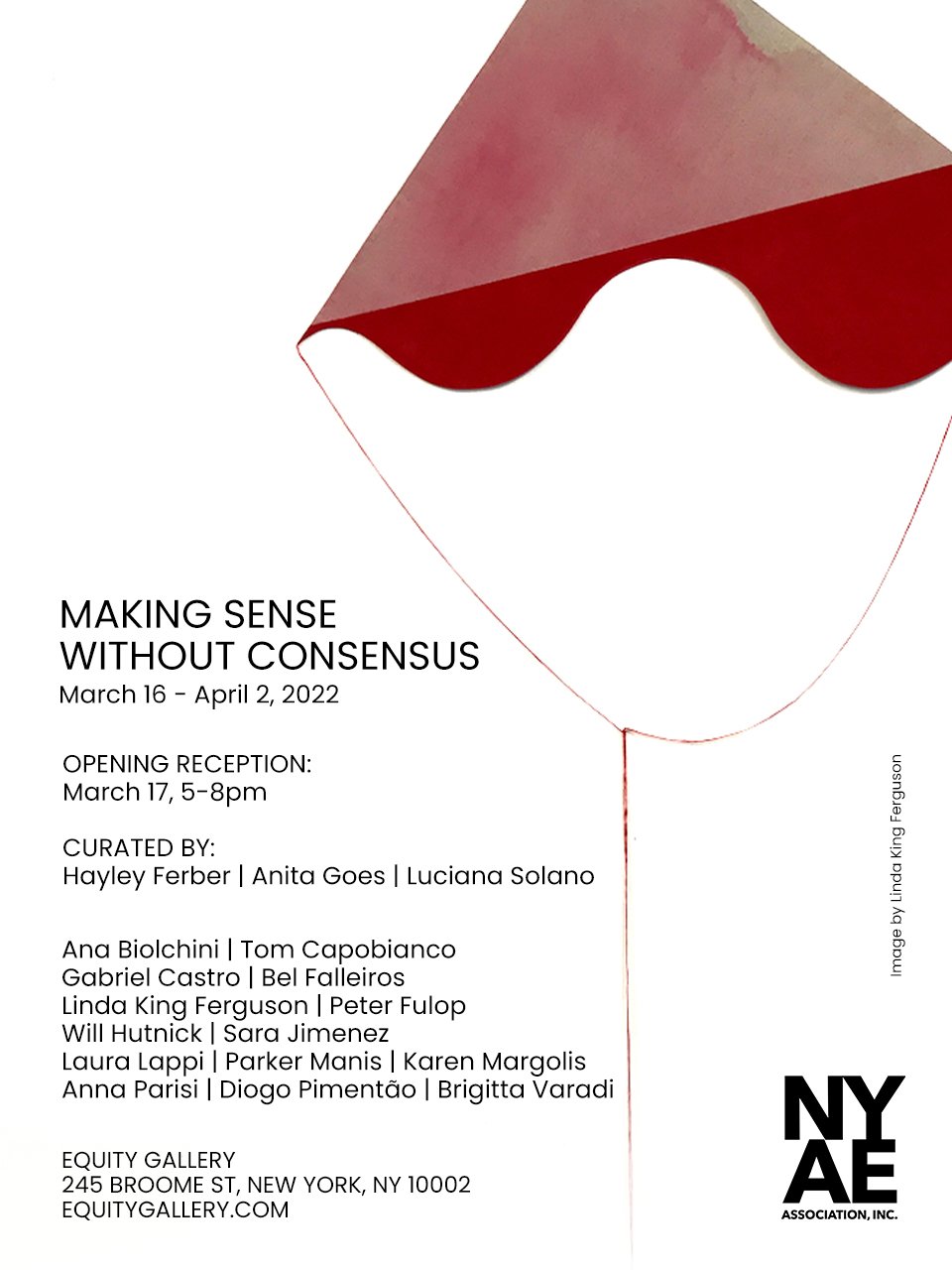In Making Sense Without Consensus, 14 artists explore making sense of the senseless from multiple perspectives producing drawings, mixed media, painting, sculpture and photography. These artists explore reality through fragmented connections. Their interactions with geometric materiality investigate whether the linearity of time is real or if past and future overlap.
Consensus presupposes that a question has a single answer: the truth. More and more we understand those truths to be dogmatic, follow biases or are results of single minded ways of thinking. What was once considered normal may have been societal constructions and therefore changeable. Instead of going back to a dual world, the artists move forward into new dimensions by building a dynamic reality in their creative open ended processes.
Parker Manis’ (b. USA, 1984) use of dyes and pigments creates a level of depth that draws the viewer into an intimate sense of isolation. Emulsive corrosion serves as an impediment to the clarity of viewership, and a reminder that some things that were, are no longer, and are but remnants left from our own personal processes of trial and error. Karen Margolis’ (b. USA) compositions emerge through accumulating, building, layering and then unraveling, burning and dismantling exploring internal mechanisms through intimate expressions of how we are touched by circumstances of life. Gabriel Castro’s (b. Brazil, 1986) wall works are the result of a complex layering process where he adds and removes layers of paint and paper to create meaningful visual patterns. He then uses discarded materials and fragments from his paintings in assembling paired sculptures.
Will Hutnick (b. USA, 1985 ) explores an “other”, undefined space that exists between our familiarity: a maze of self-similar patterns, underlying deviations, systems of recursion and objects in transition through the use of mixed media and repurposed collage. The work is simultaneously object and remnant, an archive, a glimpse. Linda King Ferguson (b. USA, 1954) investigates feminist subjectivity through what is and what is not, giving space and voice to an in-between of possibility. Color is saturated, communal, and contrasting: surfaces are thin, stained, and raw; forms are structured, incised, and permeated; space is autonomous, dependent, and open.
Sara Jimenez’s (b. Canada, 1984) collages explore the material embodiment of deep transcultural memories, exploring concepts of origins and home, loss and absence through visual metaphors that allude to mythical environments and forgotten artifacts. Anna Parisi (b. Brazil, 1984) provokes, invokes, and evokes cathartic, visceral experiences that invite engagement and allow space for self-reflection, vulnerability, and healing. Ana Biolchini’s (b. Brazil, 1953) work investigates memory, ancestrality, traditions and archetypes systems related to the unconscious dimensions of the collective.
Brigitta Varadi (b. Hungary) delves into craft, and the everyday rituals of working life as she investigates themes of sustainability and cultural heritage interweaving notions of fine art connecting us to the importance of tradition. Peter Fulop’s (b. Hungary) work emerges out of a conversation with tradition and folklore while seeking to exploit the elemental processes of material intertwined with the use of gestural actions. These reflective works allow an embodied awareness of objects and object making. Bel Falleiros’ (b. Brazil, 1983) artistic practice is driven by her relationship with the land. Working across different social and natural landscapes, she looks for the stories that unite us.
Laura Lappi’s (b. Finland, 1979) sculptural practice explores the relationship between physical spaces, man-made structures, and the human mind – the psychogeography of places. Lappi’s work examines how architecture and spatial environments influence our perceptions and affect the fluid boundaries between reality and fiction. Tom Capobianco’s (b. Brazil, 1984) sculptural work is a synesthetic experience that leads us to reconnect with the tactile sense through vision. Diogo Pimentão’s (b. Portugal, 1973) works play with viewer’s perception and how we translate medium and form into reality, expanding the boundaries between drawing and sculpture.
The artists search to expand perception and perspectives of their constructed reality. Their artworks offer a controlled external space that we can see from the outside where we may understand the underlying structures we live immersed in. The exercise of making what’s so big into a small space our eyes can navigate is one of the most powerful experiences art offers us.

